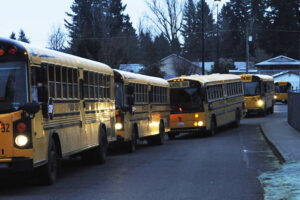They sleep in cars. In parks. In shelters. On the sofas of generous relatives or friends.
They are the more than 1.3 million homeless children nationwide.
Of that total, more than 21,000 live in Washington state, according to numbers submitted to the federal government last week.
Collected by the Office of Superintendent of Public Instruction, the numbers show that during 2009-10, the state reported 21,826 homeless students, up 5 percent from the previous year and up 56.5 percent from 2005-06.
“There are a lot of factors that could explain the increase,” said Melinda Dyer, program supervisor for the education of homeless children and youth at the OSPI. “The biggest is probably more awareness. Five years ago, many districts didn’t know that this was a requirement. We’re seeing better reporting now than we did then. The present economy also may be driving part of the increase. We have had episodic increases at certain points due to natural disasters such as Hurricane Katrina in 2005 and our own flooding in Lewis County in 2007.”
Dyer cautioned that the numbers are probably low. “We still have some reporting issues,” she said. “Plus because of the stigma attached to homelessness, some families don’t tell others they are homeless.”

